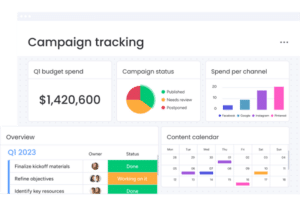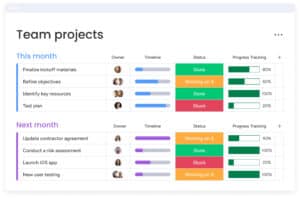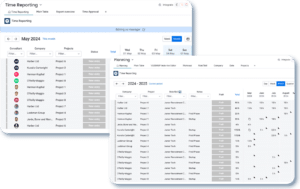Introduction
In the rapidly evolving landscape of modern business, automation stands as a cornerstone of efficiency, innovation, and scalability. At the heart of this transformation lies a powerful catalyst: the evolution of low-code platforms in business automation. These platforms have redefined the parameters of what businesses can achieve in terms of automation. Additionally, they have democratized the ability to create, innovate, and streamline processes like never before.
As we delve into the world of low-code platforms, we uncover a realm where complexity is simplified, and agility is not just a buzzword but a tangible outcome. The journey from traditional, code-heavy development to the sleek, intuitive nature of low-code solutions marks a significant shift in how businesses approach automation. It’s a shift that has enabled even those with minimal coding expertise to craft bespoke automation solutions. In turn, this shift has propelled the evolution of low-code platforms in business automation to new heights.
In this exploration, we highlight platforms such as Make, which stand at the forefront of this revolution. These platforms not only exemplify the power and flexibility of low-code solutions but also showcase how they serve as pivotal tools in the automation arsenal of businesses across the globe. The evolution of low-code platforms in business automation is not just a narrative of technological advancement but a testament to the ingenuity and adaptability of businesses striving for excellence in an ever-competitive world.
The Dawn of Business Automation
The inception of business automation can be traced back to the quest for efficiency and consistency in business processes. Initially, automation was a privilege of large corporations with substantial resources, capable of investing in complex software and specialized personnel to develop custom solutions. This era was marked by rigid systems that were often siloed, requiring extensive coding knowledge and significant development time. The dawn of business automation was revolutionary yet fraught with challenges that limited its accessibility and adaptability.
Early Approaches to Business Automation: Challenges and Limitations
Early business automation efforts were characterized by their high cost, complexity, and exclusivity. Systems were tailor-made, requiring businesses to rely heavily on IT departments or external developers. These bespoke solutions, while powerful, were inflexible and difficult to modify in the face of changing business needs or technological advancements. The evolution of low-code platforms in business automation was barely a concept at this stage. It leaves businesses longing for more adaptable and scalable solutions.
The Concept of Coding from Scratch vs. The Rise of Low-Code Solutions
Coding from scratch was the norm, with businesses investing considerable time and resources into developing and maintaining custom automation solutions. This approach, while offering specific functionalities tailored to the business’s needs, was not without its drawbacks. It was slow, resource-intensive, and often resulted in solutions that could quickly become outdated.
The landscape began to shift with the advent of low-code platforms. This marks a pivotal moment in the evolution of low-code platforms in business automation. These platforms emerged as a beacon of hope, promising to lower the barrier to entry for business automation. With features like drag-and-drop interfaces, pre-built templates, and extensive integration options, low-code platforms started to change the narrative. They offered a glimpse into a future where business automation could be more dynamic, accessible, and aligned with the fast-paced changes of the modern business environment.
Omnitas Newsletter
Sign up for our monthly newsletter to stay up-to-date on our latest blog articles, videos and events!
Thank you!
You have successfully joined our subscriber list.
The Low-Code Revolution
The low-code revolution represents a paradigm shift in the world of business automation. It’s a movement that has significantly altered the landscape, democratizing the development process and making automation accessible to a broader range of professionals. This revolution has not only empowered non-technical users to contribute to development efforts but has also accelerated the deployment of business applications. In turn, this enhances organizational agility.
Key Characteristics of Low-Code Platforms
Low-code platforms are distinguished by several key characteristics that have been pivotal in their rise to prominence within the business automation sphere:
- Visual Development Interfaces: These intuitive interfaces allow users to see the structure and flow of their applications visually. As a result, this simplifies the design and development process.
- Drag-and-Drop Features: This functionality enables users to build applications by simply dragging and dropping components. In turn, this makes the development process accessible to those without coding expertise.
- Pre-Built Templates and Integrations: With a variety of templates and the ability to integrate with a wide range of systems and applications, these platforms reduce development time and complexity. As a result, this enables businesses to adapt quickly to new challenges and opportunities.
The Impact on Development Speed and Efficiency
The low-code revolution has had a profound impact on the speed and efficiency of development projects. Businesses can now bring solutions to market faster than ever before, a critical advantage in today’s fast-paced environment.
By making the development process more accessible, low-code platforms have reduced businesses’ reliance on specialized developers. This shift has allowed for a more collaborative approach to development. An approach where business analysts, project managers, and other non-technical staff can directly contribute to the creation and refinement of business applications.
The evolution of low-code platforms in business automation offers a glimpse into a future where agility, efficiency, and innovation are within reach for every business. By breaking down the barriers to development, these platforms are not just transforming how businesses automate processes. They are also redefining what’s possible in the digital age.

Low-Code Platforms Leading the Charge
In the vanguard of the low-code revolution, platforms like Make have not just participated in the evolution of low-code platforms in business automation. They’ve been pivotal in redefining it. By offering robust, user-friendly, and highly customizable tools, these platforms have become integral to businesses looking to innovate, automate, and excel in a competitive landscape.
Exploring Make: How it Empowers Automation Across Apps
Make is a frontrunner in the low-code arena, offering a visual platform for automating workflows across various apps and services. Its strengths lie in:
- Complex Workflow Automation: Make allows users to design, build, and deploy intricate workflows that can automate complex business processes. As a result, connecting multiple applications and services with ease.
- Custom Logic and Conditions: It provides the ability to add custom logic and conditions to workflows. In turn, this enables a high degree of customization and flexibility.
- Extensive App Library: With a vast library of pre-built app connectors, Make facilitates seamless integration and interoperability between different software tools. This enhances the automation potential.
The Future of Low-Code Platforms in Business Automation
The journey of low-code platforms in revolutionizing business automation is far from complete. As we look ahead, the trajectory of these platforms promises even more profound impacts on how businesses operate, innovate, and compete. The future of low-code platforms in business automation is poised to be marked by several key trends and advancements:
Integration of Artificial Intelligence and Machine Learning
The integration of AI and machine learning technologies into low-code platforms is set to elevate the capabilities of business automation to unprecedented levels. These advancements will enable platforms to offer smarter, predictive analytics. Additionally, they’ll be able to automate more complex decision-making processes and provide more intuitive user experiences. For instance, AI-driven code suggestions could further simplify the development process. On the other hand, machine learning algorithms could optimize workflows for efficiency in real-time.
Enhanced User Experience and Accessibility
As low-code platforms evolve, a significant focus will be placed on enhancing the user experience and making these tools even more accessible to a broader audience. This will likely include more intuitive design interfaces and greater customization options without the need for coding. Furthermore, it’ll most likely include improved guidance and support for new users. The aim will be to lower the barrier to entry further. As a result, this enables more individuals and businesses to leverage the power of automation.
Greater Emphasis on Collaboration and Cross-Functional Teams
The future of low-code platforms will also see a greater emphasis on collaboration and the use of cross-functional teams. By making it easier for individuals from different departments and with varying levels of technical expertise to contribute to the development process, businesses can foster a more collaborative culture. This approach will not only speed up the development process but also ensure that the solutions developed are more closely aligned with the needs of the business and its customers.
The evolution of low-code platforms in business automation is an ongoing saga of innovation, democratization, and transformation. As these platforms continue to mature, they will offer businesses of all sizes unprecedented opportunities. Opportunities to streamline operations, enhance productivity, and drive growth. The future is bright for low-code platforms, and the possibilities are as limitless as the creativity and ingenuity of those who use them.
Conclusion
The evolution of low-code platforms in business automation is a testament to the remarkable journey of technological advancement and innovation. We’ve witnessed a revolution that has transformed the business landscape. From the nascent stages of cumbersome, code-heavy processes to the agile, user-friendly interfaces of today’s low-code platforms. Platforms like Make have not only simplified the automation of complex workflows but have also democratized the development process. In turn, this enables businesses of all sizes to harness the power of automation.
As we look to the future, it’s clear that the potential of low-code platforms is only beginning to be tapped. With advancements in AI, machine learning, and user experience, coupled with expanding into new industries, low-code platforms are set to redefine the boundaries of what’s possible in business automation. The journey ahead is filled with opportunities for innovation, efficiency, and transformation.
Harness the Full Potential of Low-Code Platforms
Are you ready to embark on your automation journey and harness the full potential of low-code platforms? Explore the power of Make with a Pro account for free. This is your opportunity to experience firsthand how Make can streamline your workflows, enhance productivity, and drive innovation within your organization.
But why journey alone? At Omnitas, we’re not just experts in automation; we’re proud partners of Make, equipped to help you leverage the platform fully. Whether you’re taking your first steps into automation or looking to optimize your existing processes, don’t hesitate to reach out to us below. Our team of specialists is here to guide you through every stage of your automation journey, ensuring you maximize the benefits of Make’s powerful platform.
If you found this blog post useful, make sure to sign up for our monthly newsletter below. Stay in the loop regarding all things business efficiency and automation!
























